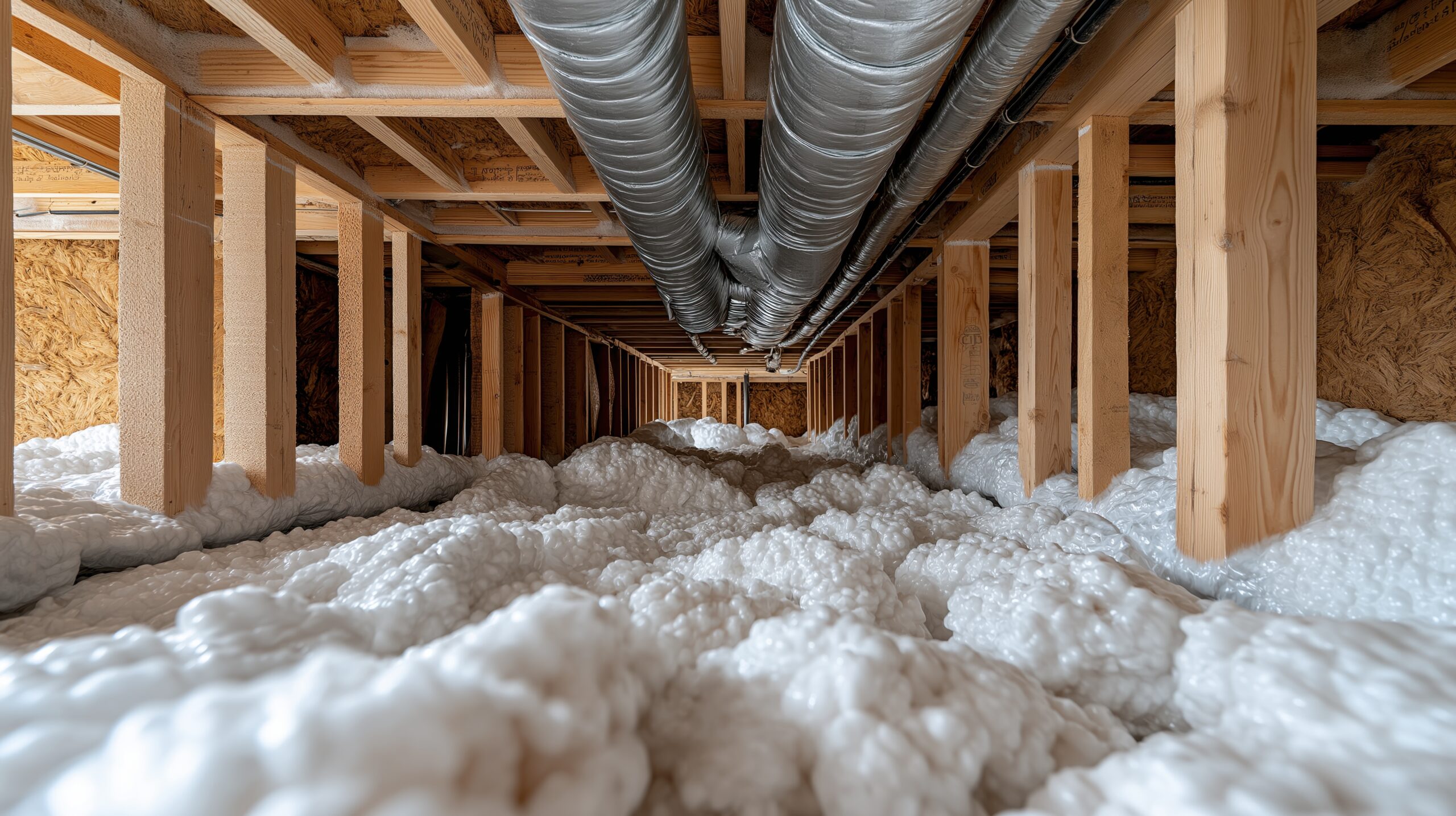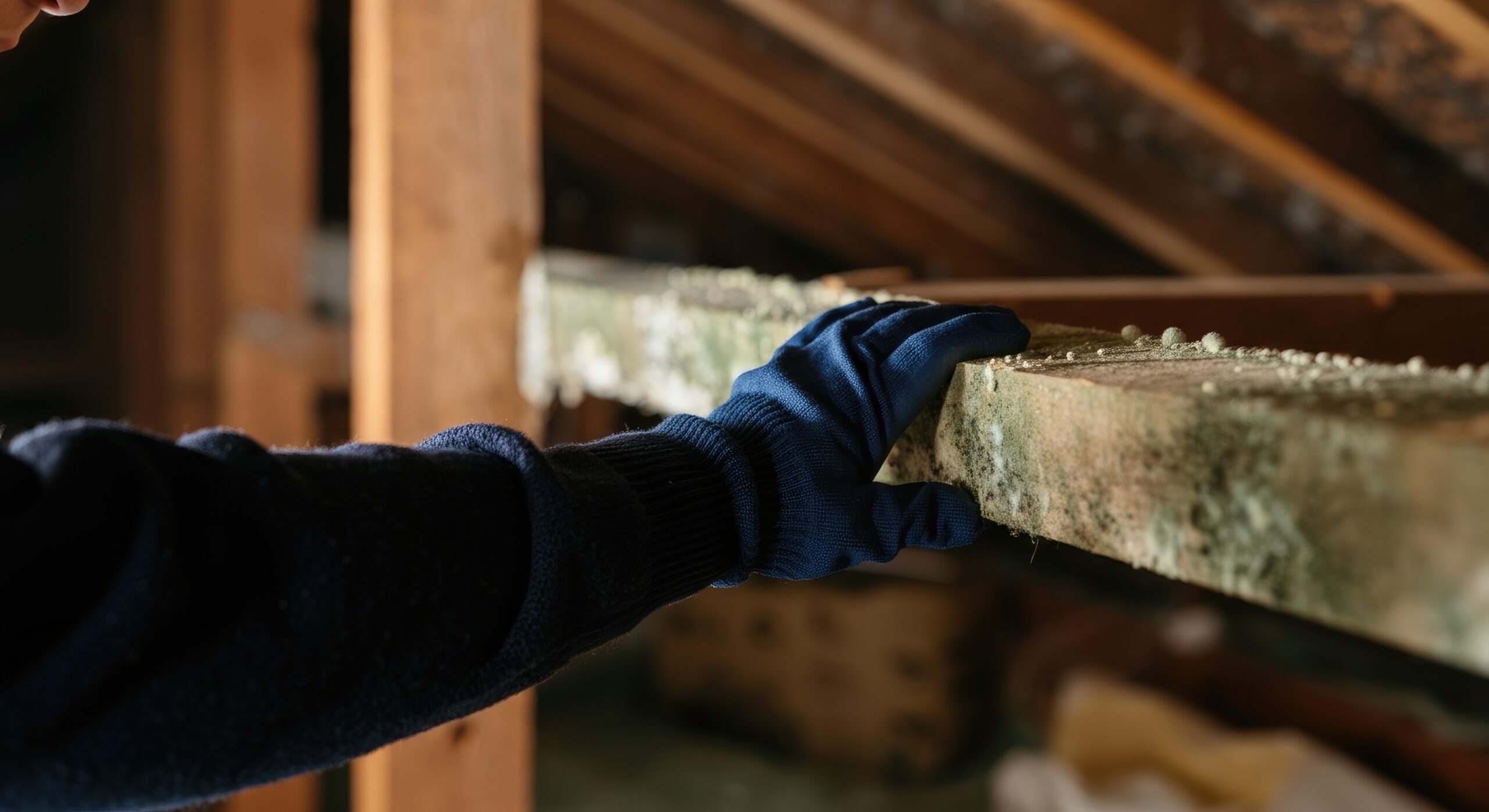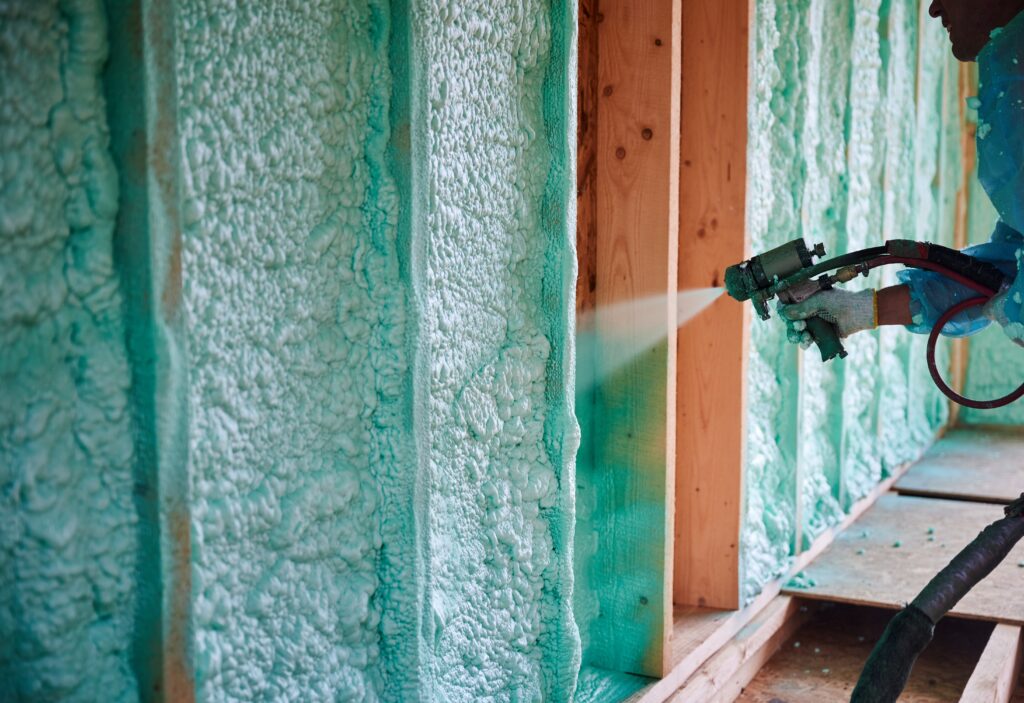
When considering spray foam insulation, a common question arises: Do you need a thermal barrier? A thermal barrier is a material that serves to protect the interior living space from the combustible nature of spray foam by providing crucial fire safety. Its primary role is to offer 15-minute protection, allowing occupants time to escape in the event of a fire.
Misunderstandings often exist regarding the necessity and application of thermal barriers with spray foam insulation. Some believe that spray foam alone is sufficient for fire protection, while others are unsure about when and where these barriers are required.
This article aims to clarify these misconceptions by exploring when a thermal barrier is essential in conjunction with spray foam insulation. By understanding these requirements, homeowners can ensure their properties meet fire safety standards and comply with building regulations effectively.
For those considering options for crawl space improvement or crawl space encapsulation, it’s important to understand how thermal barriers play a role in these areas as well. Additionally, homeowners can benefit from reading reviews about various thermal barrier products available in the market. For more detailed information on the subject, this blog provides valuable insights into the topic.
Understanding Thermal Barriers with Spray Foam
Definition and Importance of Thermal Barriers
A thermal barrier is a protective layer installed between spray foam insulation and interior living spaces. Its primary function is to enhance building safety by providing a critical layer of fire protection. In the event of a fire, the thermal barrier serves to:
- Delay Ignition: It slows down the ignition process of the underlying spray foam.
- Provide Escape Time: Offers occupants at least 15 minutes to evacuate safely, aligning with the standards set by building codes.
Thermal barriers are essential in reducing the risk of rapid fire spread, ultimately safeguarding lives and property.
Functionality with Spray Foam Insulation
When used with spray foam insulation, thermal barriers act as a shield against high temperatures. Here’s how they work:
- Heat Resistance: Materials like half-inch gypsum board can withstand heat for a specified duration, preventing direct exposure of the combustible foam.
- Integrity Maintenance: The barrier helps maintain structural integrity during a fire, thereby minimizing damage.
By incorporating thermal barriers, buildings meet safety regulations while maximizing the insulating benefits of spray foam. This combination ensures compliance with fire safety standards without compromising on energy efficiency or comfort.
The International Residential Code (IRC) and Thermal Barriers Requirements
The International Residential Code (IRC) is a set of building codes that ensure safety and legality in residential construction. It was developed by the International Code Council and outlines the requirements that builders must follow to create safe, sustainable, and modern structures. One important aspect covered by the IRC is insulation materials, specifically foam plastic insulation like spray foam.
IRC Requirements for Foam Plastic Insulation
According to IRC regulations for insulation, foam plastic insulation must be separated from the interior living space by an approved thermal barrier. This requirement is crucial for both compliance and the safety of residents in case of a fire. The code specifies:
- Thermal Barrier Requirement: Foam plastic insulation should be covered with a thermal barrier that provides at least 15 minutes of protection against fire exposure.
- Material Standards: Commonly used materials that meet these requirements include half-inch gypsum board or equivalent products approved through rigorous testing.
Key IRC Requirements for Thermal Barriers
The IRC defines a thermal barrier as something that slows down heat transfer and provides protection during a fire. This delay is important for keeping people safe by giving them more time to escape.
- The 15-Minute Rule: A key part of the IRC’s thermal barrier requirements is the “15-minute rule.” This rule says that any material used as a thermal barrier must resist fire for at least 15 minutes. This time is critical for allowing people to evacuate safely.
- Approved Materials: According to IRC guidelines, materials like gypsum board are widely accepted as thermal barriers because they have been proven to meet the 15-minute rule. Other materials may also qualify if they pass recognized tests showing equal performance under fire conditions.
Importance of Compliance with Insulation Code
Following the insulation code requirements set by the IRC is essential for several reasons:
- Safety Assurance: By following these regulations, builders and contractors can ensure that installations do not put occupants’ safety at risk.
- Legal Obligation: Meeting IRC standards protects builders from potential legal issues arising from non-compliance and ensures that constructions are up to code.
Understanding when a thermal barrier is necessary with spray foam involves recognizing how these barriers contribute to creating safer living environments. In this article, we will explore practical applications of these requirements in different areas of your home and discuss alternatives to traditional thermal barriers.
Determining When Thermal Barriers are Necessary with Spray Foam Insulation
Specific Areas That Require Thermal Barriers
Basement Rim Joists
Importance: Basement rim joists often serve as a critical connection point between the foundation and the upper floors of a home. They are pivotal in maintaining structural integrity and providing insulation against outdoor air infiltration.
Thermal Barrier Requirement: Typically, when spray foam is applied to basement rim joists, a thermal barrier is required if these areas are part of or lead directly into living spaces. This is due to their potential as conduits for fire spread.
Use Cases: If basement areas are used for storage or as utility rooms, a thermal barrier may be necessary. However, in cases where the basement is unoccupied or not used for any substantial activity, exemptions might apply. Consulting local building codes is advisable for specific guidelines.
Attic Spaces
Role: Attics can vary from being crawl spaces to fully functional storage areas or even living spaces. The use and configuration of an attic significantly influence the necessity for a thermal barrier when using spray foam insulation.
Regulatory Requirements: For attics that serve as living quarters or accessible storage spaces, applying a thermal barrier over spray foam insulation is generally mandated. This requirement ensures safety by delaying the fire’s penetration through the foam, providing occupants with critical escape time.
Exceptions: In instances where attics are inaccessible or strictly utility zones without any stored combustible materials, some jurisdictions may waive the requirement for a thermal barrier. Confirming with local authorities ensures compliance and safety.
Crawl Spaces
Definition: Crawl spaces are typically small areas under homes that provide access to plumbing, electrical wiring, and other utilities.
Considerations for Thermal Barriers: The necessity of a thermal barrier in crawl spaces largely hinges on their usage. If these areas are utilized for storage or have potential pathways leading into habitable spaces, incorporating a thermal barrier becomes essential.
Exemptions and Alternatives: Crawl spaces purely serving as utility access points may not require traditional thermal barriers, provided there’s no direct threat of fire spread to living areas. In such cases, alternative solutions like intumescent coatings could be considered, contingent upon local code approvals.
Impact of Usage on Thermal Barrier Necessity
Living vs Non-Living Spaces: The primary determinant for installing thermal barriers alongside spray foam insulation lies in distinguishing between living and non-living spaces. Habitable areas invariably warrant added protection due to higher occupancy risks during a fire event.
Storage Implications: Areas designated for storage frequently necessitate barriers due to the potential accumulation of flammable items which increase fire hazards.
Understanding these distinctions aids homeowners and builders in making informed decisions about when and where to implement additional safety measures like thermal barriers with spray foam insulation. Engaging with building professionals can further clarify requirements specific to individual projects and locations.
Additionally, exploring options such as radiant barriers might provide extra insulation benefits in certain scenarios.
Exploring Alternatives to Traditional Thermal Barriers
In certain scenarios, alternative solutions to traditional thermal barriers can be considered. Products like intumescent coatings and cementitious-based materials offer viable options under specific conditions. These alternatives are beneficial in areas where applying standard barriers may be impractical or where enhanced fire protection is necessary.
- Intumescent coatings swell when exposed to heat, creating an insulating layer that protects the underlying spray foam.
- Cementitious products provide a robust defense against fire spread.
When determining if a thermal barrier is needed with spray foam, especially in places like basement rim joists or attics, these alternatives present flexible and effective solutions.
Practical Applications and Considerations When Using Spray Foam Insulation with or Without a Thermal Barrier
Real-world Examples of Spray Foam Application:
Understanding the practical implications of using spray foam insulation in compliance with IRC regulations is crucial for ensuring effective fire protection. Here are some examples that illustrate how these regulations play out in real-life scenarios:
- Residential Basements: In many homes, basements are finished to create additional living space. When spray foam is used in such areas, a thermal barrier like a half-inch gypsum board is typically required to meet the IRC’s 15-minute fire protection standard. This application ensures that in the event of a fire, occupants have enough time to evacuate safely.
- Attic Spaces: If an attic is intended for storage or as a habitable space, the integration of a thermal barrier becomes necessary. However, if the attic remains unoccupied and inaccessible for storage, exceptions might apply where no thermal barrier is needed.
- Crawl Spaces: Often neglected, crawl spaces can benefit from spray foam insulation to improve energy efficiency. According to IRC guidelines, if these areas are not used for storage or inhabited, they might not require a thermal barrier, but it is essential to verify this with local building codes.
Best Practices for Ensuring Fire Protection Compliance When Using Spray Foam Insulation
Adhering to best practices during installation can significantly enhance fire safety and compliance with local codes:
- Engage Qualified Professionals: It’s vital to work with experienced contractors who understand the intricacies of spray foam application and IRC regulations. Professionals can assess specific project needs and recommend appropriate solutions.
- Use Approved Materials: Ensure that any material used as a thermal barrier meets IRC specifications. Gypsum board is commonly employed; however, alternatives like intumescent coatings may be suitable if they meet approved standards.
- Regular Inspections: Conduct regular inspections post-installation to ensure ongoing compliance with fire safety requirements. This includes checking for any damage or degradation in either the spray foam or its protective barrier.
Recommended Practices During Installation:
Following these practices can help maintain compliance and optimize safety:
- Pre-Installation Assessment: Evaluate all potential areas requiring insulation and determine whether they need a thermal barrier based on their use and access.
- Precise Application Techniques: Apply spray foam evenly to avoid gaps that could compromise insulation effectiveness or fire protection capabilities.
- Compliance Checks: Verify that all materials and installation methods adhere strictly to IRC requirements as well as any additional local building codes.
- Documentation: Keep detailed records of the insulation process, including materials used and any inspections conducted. This documentation can be invaluable for future reference or when selling the property.
These strategies provide a comprehensive approach to integrating spray foam insulation effectively while prioritizing safety through adherence to established regulations. Additionally, it’s worth noting that there are federal tax credits available for home insulation and air sealing, which can provide financial relief while improving your home’s energy efficiency.
Conclusion: Do You Need a Thermal Barrier When Using Spray Foam?
When considering spray foam insulation, the question often arises: do you need a thermal barrier when using spray foam? The necessity of a thermal barrier depends on several factors, including specific building codes and the intended use of the insulated area.
- Building Codes & Safety Compliance: The International Residential Code (IRC) generally requires a thermal barrier for spray foam insulation in areas connected to living spaces. This requirement ensures that in the event of a fire, occupants have sufficient time to evacuate safely.
- Professional Assessment: Engaging with qualified contractors or building officials is crucial. These professionals have the expertise to determine whether your project necessitates a thermal barrier based on compliance with local codes and regulations.
- Project-Specific Considerations: Every construction project has unique characteristics. Factors such as the location of the spray foam application, usage of space, and potential exemptions should be thoroughly evaluated by professionals to ensure optimal safety and efficiency.
Seeking expert advice not only guarantees adherence to safety standards but also maximizes the effectiveness of your insulation investment.
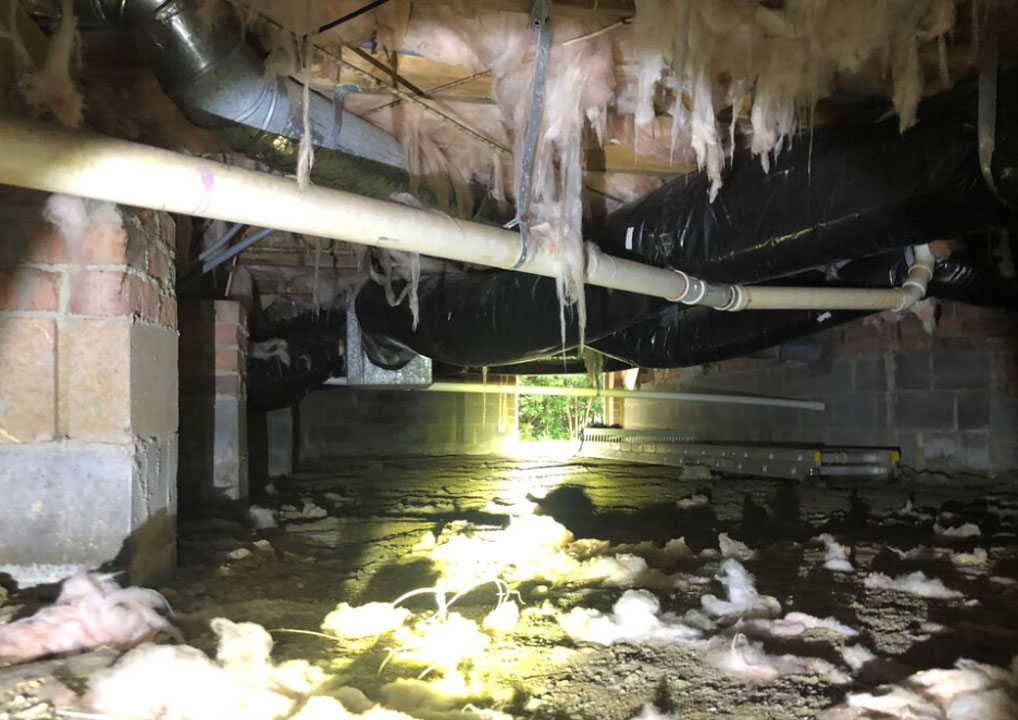
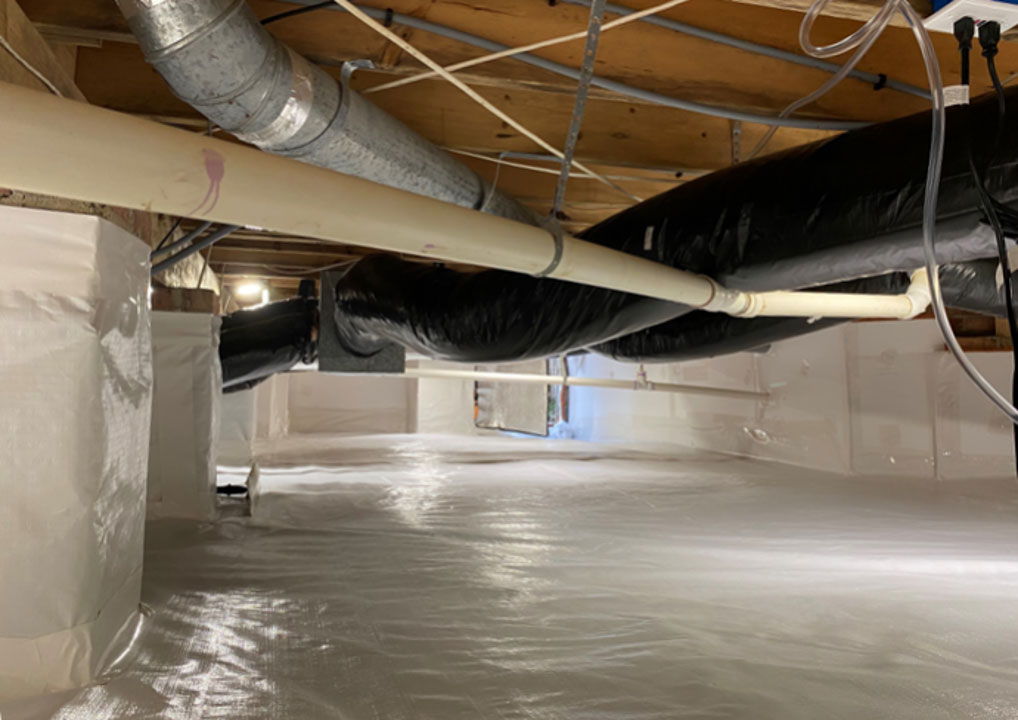
FAQs (Frequently Asked Questions):
What is a thermal barrier and why is it important?
A thermal barrier is a material that provides fire protection by delaying the spread of flames and heat. It plays a crucial role in building safety by ensuring that insulation materials, like spray foam, do not contribute to fire hazards.
When is a thermal barrier necessary when using spray foam insulation?
A thermal barrier is typically necessary in areas such as basement rim joists and attics, especially when these spaces are used for storage or habitation. The International Residential Code (IRC) outlines specific requirements for when a thermal barrier must be installed.
What are the IRC's key requirements regarding thermal barriers?
The IRC mandates that foam plastic insulation must be covered with a thermal barrier unless certain exceptions apply. One key requirement is the '15-minute rule', which states that the thermal barrier must withstand direct flame for at least 15 minutes to provide adequate fire protection.
Are there alternative solutions to traditional thermal barriers?
Yes, alternatives to traditional thermal barriers include intumescent coatings and cementitious-based products. These may be suitable for specific applications where standard thermal barriers might not be feasible or necessary.
What best practices should be followed during spray foam insulation?
To ensure compliance with local codes and regulations regarding fire protection, it's recommended to consult with qualified contractors during installation. Proper application techniques and adherence to IRC standards are essential for safety.
Should I seek professional advice regarding the need for a thermal barrier?
Yes, it is advisable to seek professional advice from qualified contractors or building officials who specialize in spray foam insulation. They can assess your specific project requirements accurately and help determine if a thermal barrier is needed.



